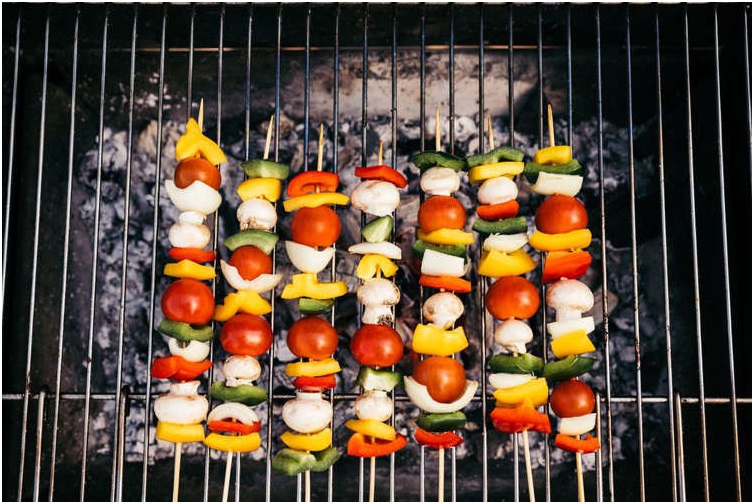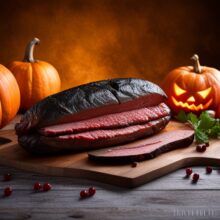Barbequing: An American Tradition

No matter if it is the 4th of July, or just another day in the summer, chances are someone in your area is barbequing. Barbequing has become a standard American tradition for families. The reason as clear as to why, not only does the food that comes from barbequing have a taste that is unmatched by other cooking methods, but barbequing presents a reason for families to gather together. Some on my most memorial experiences happened outdoors at one of my families many get-togethers.
If you are a foodie, you’ve probably heard of barbequing. While the origins of barbecue are disputed, there are many styles and variations of this southern staple. Read on to learn more about barbecue’s history, preparation, and flavors. You may even find yourself inspired to create your own barbecue dishes. After all, who wouldn’t want to try a barbequed steak for dinner?
Origins
It is not known when the first references to barbequeing in the United States were made, but the word appears in written records as early as the 16th century. Those references can be traced to native peoples of North and South America. The history of barbecuing in the Americas is a complex one that involves migration, colonialism, and war. But it is certainly one of the most popular ways to cook meat.
Originally, barbecuing was a way to feed large numbers of people at a party or social gathering. While technically illegal, this practice eventually became a part of political campaigns and became a staple of Southern cooking. Today, barbeque is a popular dish enjoyed by families, friends, and neighbors. Here are some of the history of barbecuing in America:
The word barbecue is believed to originate from the Taino people of the Caribbean. Columbus observed them smoking meat using wood. The slow-cooking method of indirect heat takes hours, but results in incredibly flavorful meat. The Spanish term barbacoa, meaning “slow-cooking,” is thought to be derived from the Timucua and Arawak people of the Caribbean and Florida.
Styles
There are many different barbecue styles, and some regions have distinct regional favorites. While the East Texas ‘cue is considered the emblem of Texas barbecue, other regions enjoy it, as well. In central Texas, a thin crust of dry spices and pecan or oak is applied to the meat before it smokes for several hours. While all these styles use a variety of ingredients to create a unique taste, these styles can be found in most urban areas, as well.
The American barbecue style has four main regional variations, including Carolina, Texas, and Kansas City. There are many micro barbeque styles within these areas. For example, the white sauce characteristic of Alabama style barbecue is a mayonnaise-based condiment punctuated with apple cider vinegar. Similarly, the Carolina and Memphis styles contain horseradish and brown mustard. In addition to meat, many regional dishes also feature sides like potato salad and coleslaw.
Barbecue has been practiced for centuries in the United States. Historically, it was important in the South, where it originated. Its widespread popularity spread throughout the country, and today, barbecue has become an important part of American culture. Barbecuing as a cultural tradition spread throughout the South, and even into parts of the Midwestern states, such as Iowa, Illinois, and Missouri. In each region, regional barbecue styles developed and branched out, making each distinctly unique.
Flavors
While flavor is a major driving force behind consumer acceptance of foods, some people aren’t aware that barbecuing can also add delicious flavors to your food. In fact, the flavors of barbecuing can be enhanced through the use of various spices, smoke, and the product itself. While flavor is an extremely complex topic, the simple fact is that thousands of compounds are used to create the taste of food. Seasonings vary greatly from region to region, so you may find that your favorite flavors are different.
Today, barbecue flavor trends are increasingly global, and authenticity is becoming increasingly important. Authentic regional BBQ has become increasingly popular and is becoming more readily available across the country. As a result, consumers are seeking new flavor combinations and styles. This is particularly true with the rising popularity of backyard cooking and the COVID pandemic. In order to stay ahead of the competition, innovation in barbecue flavor is essential. This article will provide an overview of the different regional barbecue styles and flavors.
As one of the oldest cooking styles in history, barbecue in America has developed its own distinct flavor profile. Six regions contribute their own distinctive barbecue flavors. As the world’s largest culinary export, barbecue has inspired innovative food trends in various food categories. The flavors of barbecue, which are found in different parts of the world, are particularly appealing to consumers of different age groups. Kerry found 26 distinct flavors associated with barbecue throughout its Taste Charts – 12 of which are emerging, and five are up and coming.
Preparation
Barbecue has many meanings, and it is not merely a way to cook food. It is also a cultural tradition, and a lifelong culinary philosophy. During the summer months, you’re likely to catch many families enjoying the outdoors with a barbecue. These celebrations are usually organized around a single piece of meat, such as a whole hog or beef.
The process of barbequing has roots in African cooking, and black chefs were largely forgotten in the modern barbecue tradition. Enslaved Africans and their descendants worked over pits covered with green wood, innovating and refining regional barbecue traditions. As time went on, Mexican, German, and other traditions were added to the base created by these enslaved Africans.
While its roots can be traced back to enslaved Africans, barbecue has become a cultural icon of America. As a cultural art form, barbeque is deeply political, and there are rules and traditions that govern the preparation. The process of barbecuing is as varied as the variety of regional barbecue styles. However, there are some universal guidelines that should be followed when barbequing.
Ingredients
There are many different kinds of barbecue, each with its own set of traditions and ingredients. The American barbecue style has its roots in a variety of cultures, from Indigenous cultures of the Caribbean to Spanish conquistadors and pitmasters of the southern United States. These diverse influences have shaped barbecue’s history and influence today. But what makes the American barbecue tradition so distinct from other cooking methods?
The oldest form of barbeque is Caribbean, where its indigenous Taino people developed the art form. Spanish explorers first mentioned it in the 16th century. Taino peoples dried meat, which they could then carry on long journeys and re-hydrate with water. This method was the genesis of modern jerky. Moreover, barbeque became a dominant cuisine in the United States by the 1930s.
Barbecue, also known as “barbecue,” is the cooking of meat over an indirect flame. In the United States, barbecuing has become a popular cultural activity, spawning pop culture with TV shows, historically-themed road trips, and fusion cuisine such as barbecue tacos. Because it is so popular in the South, barbecue has become a national pastime.
Origins in the South
Barbecue is an American culinary tradition with roots in Native American culture. In the 1540s, Hernando de Soto, an explorer from Spain, enjoyed his first barbecue feast with the Native Americans in the state of Texas. The techniques of slow-roasting meat spread from the South to the north. The American Civil War brought barbecuing to the United States, and virulent racism and Jim Crow laws were still widespread. After the war, black people found employment in the cooking and barbequing industries, often using skills they had learned as slaves.
The southern pig was a convenient food source, and it required little maintenance. Compared to beef cattle, pigs could be allowed to roam freely and convert their feed into meat much more quickly. This became a popular symbol of Southern culture, and pig BBQ gained a national following. By 1860, pigs and other livestock produced by southern farmers were worth double the value of cotton. In addition, the pig was much leaner than modern hogs.
The earliest recorded description of a barbequed pork may have come from Mississippi. Although it is impossible to prove the exact location of the first barbacoa, Doyle’s book does mention the presence of a buccaneer’s camp near Chickasaw, Mississippi. This description is more likely to be accurate, since the pig itself would have been cooked on a barbacoa in earlier decades.
Planning A Barbeque
First, no barbeque would be complete without guests and proper outdoors weather. Plan ahead of time, checking with your potential guests for scheduling conflicts and issues. Finding a date and time that is suitable for everyone should not be to hard as long as you everyone enough advanced notice. Alternatively, be sure to check the weather for that type of year. If you live in a climate that cannot be predicted, then you may want to have a backup plan just incase unusual weather comes. You cannot predict things like rain and thunderstorms ahead of time, but you can make sure that you hold you barbeque during the time of year that will be pleasant to your guests. A barbeque in cold weather may hold more negative memories of trying to keep warm rather then good memories of family and friends.
Barbequing has been around since early cavemen figured out that food tasted great after being cooked on an open fire. Perhaps one of the main memories attached to a family barbeque is what was on the menu that day. Barbequing opens a whole array of types of foods available. The type of foods you serve should largely depend on your crowd and the event in which you are celebrating. With the wide range of possibilities, you are sure to find at least a few items that will please your crowd.
Make sure that you prepare ahead for your barbeque. 12 to 24 hours before you plan on beginning the party, make sure to thaw, prepare, and marinate the meat you will be cooking. Once you have the meat stored away, soaking up the marinate, then you must start thinking about what types of side dishes you will be having. If you want a completely tradition barbeque, you may want to stick with traditional sizes. Traditional barbeque sides include potatoes and potato salad, baked beans, and coleslaw. Your traditional condiment bar should include pickles, relish, and onions. These foods are typically severed at barbeques because they are easy to prepare and store until the event happens. You may want to cook other items, but any barbeque is complete with just the items listed above.
A themed barbeque may present more opportunities to hold a festive event. With a themed event, you can splurge on the atmosphere and decorations. Matching tablecloths, napkins, and plates can be found at any local store. You can also match your décor to the party. For example, a luau could simply be creative colored utensils, leis, and Tiki torches, all of which are extremely cheap. You can even reuse the Tiki torches later!
Your party area should be set up before guest arrive. It only takes a few minutes to get everything ready, but the reaction you get from your arriving guests may make you feel like you were preparing and decorating all day. Depending on the situation, you may or may not want to have the food already cooking on the grill. The smell will surely be inviting if you start cooking ahead!


